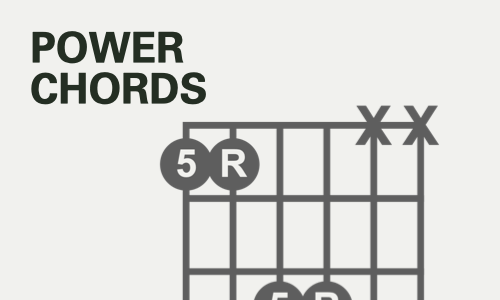Guitar Basics
Guitar Basics: Overview
Guitar is one of the best instruments to learn- it sounds good when its played by itself, when it is played with other guitarists, and as part of a band. Set yourself up for success by developing good practice habits and using strategies to be aware of your mind, body, and the music.
Learn how to build a solid foundation for your playing by developing good posture and playing with proper technique.
Anatomy
Getting StARTED
Get comfortable with your guitar by learning its parts, how to hold it, and knowing the directional cues that are used when referring to notes, frets, and strings.
Parts of the Guitar
Being able to accurately talk about different parts of the guitar will make it easy to start to play.
Playing Posture
Playing with a healthy position will allow you to play for a longer period of time without interruption. Start with good habits now so you don’t have to worry about breaking bad ones later.
Pitch Direction
When musicians talk about direction, they are referring to how high or low a sound is. The lowest string on the guitar, for example, is the lowest sounding one- not the one closest to the floor.
The Strings
IDENTIFICATION
Guitar strings are identified by their number and letter. It is important to know both of these to be understanding chord charts, scale patterns, and to be able to communicate with other players.
String Numbers
There are six strings on most guitars. The thinnest string (the one closest to the floor) is string number one, and the rest of the numbers can be counted from this string. The thickest string is string number six.
String Letters
Knowing the letter names of the strings will be very helpful when playing bass, power chords, and barre chords.
PRACTICE
Work on playing and saying the open strings in time with this Noteflight Score. Practice smarter, not harder by following these steps:
Count and say the letter names of the strings without playing guitar.
Say the letter names out loud and play the strings out of time.
Count and play the strings at a slow speed while keeping a steady tempo.
Use a metronome to slowly speed up the speed in which you can say and play the open strings.
Tuning
PERFECT PITCH
Even the best performance can get thrown off by an out of tune instrument. Pay close attention to the sound of the guitar when you are playing single notes and chords to make sure you are in tune. Sing along with the open strings to develop a sense for when the notes are sharp (too high) or flat (too low) and use a tuner to ensure the best possible result. Follow these steps when tuning:
Tune Up: always start from below the target note to keep tension on the windings.
Pluck the string before moving the tuning machine and adjust the tension during the string’s sustain.
If a string feels too tight, it probably is. Ask someone for help before breaking a string.
GUITAR TUNA
Read
PLAYING CHORDS
A chord is when more than one note is played at the same time. Basic three string chords are easy to play and will give you an opportunity to apply your understanding of the fretboard to start making music.
Technique
Technique is how you hold the instrument, how you use your fretting hand, and how you use your picking hand to play. Proper technique consists of four things: thumb on the back of the neck, curled fingers, only use tips of fingers, and hover fingers over the fretboard when they aren't being used.
Reading Chord Charts
A chord chart shows the string, frets, and finger locations for a certain chord voicing. Choose the fingers for the chord charts
Complete the Guitar Basics Worksheet →
WHAT YOU’RE GUNNA DO
What You’re Gunna Do is a song that focuses on applying proper playing technique to chordal playing. Use the play-a-long video and/or read the Chord & Lyrics Chart → or Lead Sheet →
In order to be successful with the song, follow these steps:
Build the chord shapes for the Verse of the song and practice keeping your fingers close to the fretboard.
Try to make all of the strings ring out clearly for each chord.
Count and play the chords to make sure you can keep them in time.
Say or sing the words of the Verse along with the chords while keeping a steady beat by tapping your foot.
Repeat the same process for the Chorus
MORE RESOURCES





